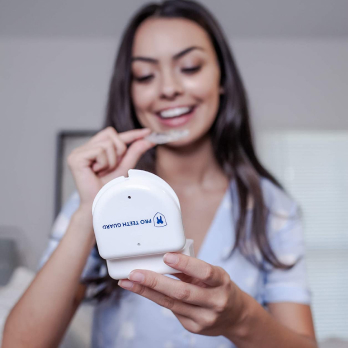TENS Unit for TMJ
25th Jul 2021
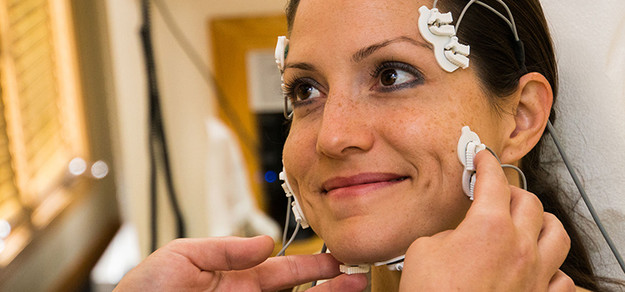
TMJ is an abbreviation for the temporomandibular joint, which connects your skull to your jaw bones. The term TMJ is also often used to refer to temporomandibular joint disorder (TMD), which is a dysfunction within those joints. This dysfunction can cause pain, difficulty chewing, tinnitus (ringing in the ears), and difficulty opening or closing your mouth. Another common side effect is clicking or locking of the jaw joint. A TENS unit for TMJ is an effective treatment strategy.
Transcutaneous electrical nerve stimulation (TENS therapy) is a form of physical therapy for TMJ disorder. It can help relax the muscles in your jaw and reduce pain caused by TMD.
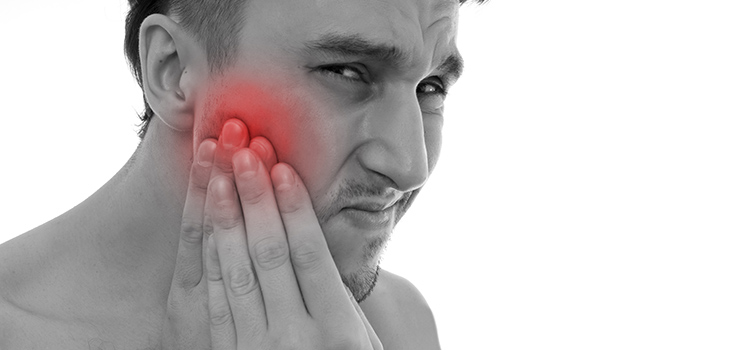
What is TENS Therapy?
TENS treatment is neuromuscular therapy that sends low frequency voltage electrical currents to points of pain in the body. Electrodes are placed on the points of pain to stimulate nerve pathways. This causes tingling and massaging to soothe pain.
Many people use TENS units for back pain, period cramps, arthritis, neck pain, and other ailments. This form of treatment is a safe and effective pain relief strategy. Studies have found that it both reduces pain and improves muscle activity (de Lima Ferreira et al 2017).
Related Articles:
How do TENS units help TMJ pain?
When using TENS therapy for TMD pain, electrodes are attached to the jaw joint and other pain points such as the neck. The low voltage electrical current encourages your jaw muscles to relax, lessening stress on the jaw and producing endorphins. When this happens, your pain will likely dull and subside.
The TENS unit also works by blocking pain signals to your brain. Instead of feeling pain, you’ll feel the tingling and massaging caused by the electrical stimulation.
A clinical study conducted in 2014 found that using a TENS machine for TMJ pain was effective. The study concluded, “On comparative analysis, adjuvant TENS therapy was found to be more effective than medication alone, in controlling pain” (Shanavas et al).
Treatment with a TENS unit is effective in reducing upper and lower jaw pain, neck pain, earaches, facial pain, and other TMJ symptoms.

TENS Treatment Process
Treatment for TMD with a TENS unit is typically done in a dental office. Your dentist will attach electrode pads to your jaw joints and any other areas that may be painful. These other areas might include your neck or different facial muscles. Once the electrodes are in place, the low voltage electrical currents will begin.
You will most likely feel a tingling sensation in place of the pain that you typically feel from your TMJ. As your muscles relax and your pain lessens, your brain will also release endorphins. These feel-good chemicals can help to reduce pain as well. (Sprouse-Blum et al 2010).
Once your dentist begins the treatment, all you need to do is sit back and relax. Your treatment may last about 30 minutes or, in some cases, longer.
While TENS treatment is effective, it is not permanent, so you will likely need to return for additional treatments. With consistent treatment, TMJ problems will subside. TENS therapy treats your symptoms, but it does not fix the root cause of your TMJ. You may return for continual treatments, or your dentist may teach you how to give yourself treatments at home.
Related Articles:
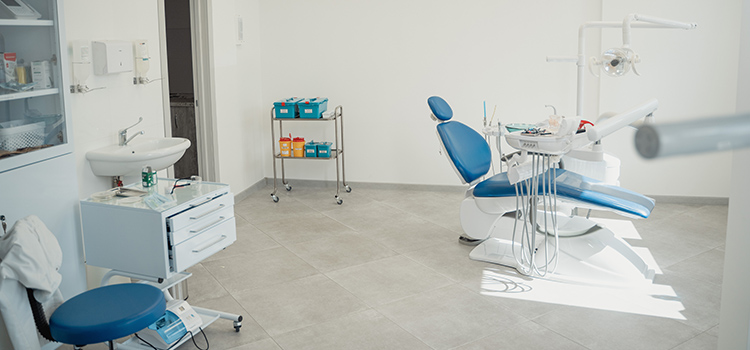
Is TENS treatment safe?
Yes, TENS treatment is safe for most people. Machines can be purchased online to be used at home, and you can also get treatment from your provider. Typically, the machines that are sold to use at home have lower levels of electric frequency.
Usually, TENS treatment for TMJ is conducted in a dental office or medical office by a healthcare professional. Once you have had treatment by your provider, he or she may be able to show you how to safely continue treatment with a TENS machine at home.
One of the major benefits of TENS treatment for TMJ is that it is a non-invasive, drug-free treatment. It’s an excellent option for those with a fear of needles and those who want to limit medication use.
There are a few contraindications of using a TENS machine to be aware of. Be sure to speak to your healthcare provider before beginning treatment if you are pregnant, have a pacemaker, have epilepsy, or have a heart problem.
Using a TENS Unit for TMJ
Chronic pain from TMJ can be unbearable at times, and finding the right treatment to relieve your symptoms is imperative. If a TENS unit sounds like the right treatment for you, talk to your dentist about trying this therapy for your pain. If he or she does not provide that service, your dental office may be able to refer you to a provider that can offer this service to you. Treating TMJ is essential to live a pain-free, restful life.
TENS treatment is safe, effective, and noninvasive, so it may be worth pursuing to ease your TMJ symptoms. Other TMJ treatments include TMJ mouth guards, TMJ splints and other orthodontics, botox, etc.
References:
- Ferreira, A. P., Costa, D. R., Oliveira, A. I., Carvalho, E. A., Conti, P. C., Costa, Y. M., & Bonjardim, L. R. (2017). Short-term transcutaneous electrical nerve stimulation reduces pain and improves the masticatory muscle activity in temporomandibular disorder patients: a randomized controlled trial. Journal of applied oral science : revista FOB, 25(2), 112–120. https://doi.org/10.1590/1678-77572016-0173
- Haddad, J. (2020). What Is A TENS Machine? How Can It Be Used To Treat TMD? Rochester Advanced Dentistry. https://www.rochesteradvanceddentistry.com/blog/what-is-a-tens-machine-how-is-it-used-for-tmd/
- Mayo Clinic Staff. (2018). TMJ disorders. Mayo Clinic. https://www.mayoclinic.org/diseases-conditions/tmj/symptoms-causes/syc-20350941
- NHS Writing Staff. (2018). TENS (transcutaneous electrical nerve stimulation). NHS Choices. https://www.nhs.uk/conditions/transcutaneous-electrical-nerve-stimulation-tens/
- Shanavas, M., Chatra, L., Shenai, P., Rao, P. K., Jagathish, V., Kumar, S. P., & Naduvakkattu, B. (2014). Transcutaneous electrical nerve stimulation therapy: An adjuvant pain controlling modality in TMD patients - A clinical study. Dental research journal, 11(6), 676–679. https://www.ncbi.nlm.nih.gov/pmc/articles/PMC4275636/
- Sprouse-Blum, A. S., Smith, G., Sugai, D., & Parsa, F. D. (2010). Understanding endorphins and their importance in pain management. Hawaii medical journal, 69(3), 70–71. https://www.ncbi.nlm.nih.gov/pmc/articles/PMC3104618/
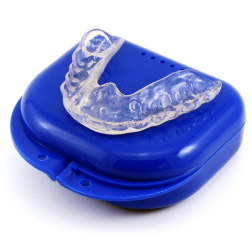
- Most Popular
- Hard Outside, Soft Inside
- 2MM Thick
- Moderate / Heavy
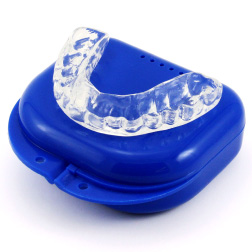
- Most Durable
- Hard Materials
- 1.5MM Thick
- Heavy / Severe
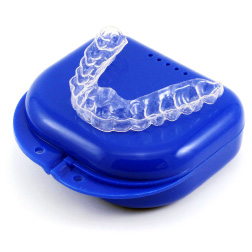
- For Day Time Use
- Thin, Barely Visible
- 1MM Thick
- Light / Moderate
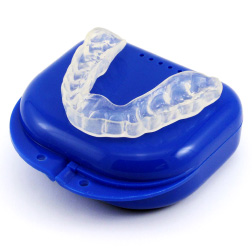
- For Clenching
- Flexible & Soft
- 1.5MM Thick
- Light / Moderate

